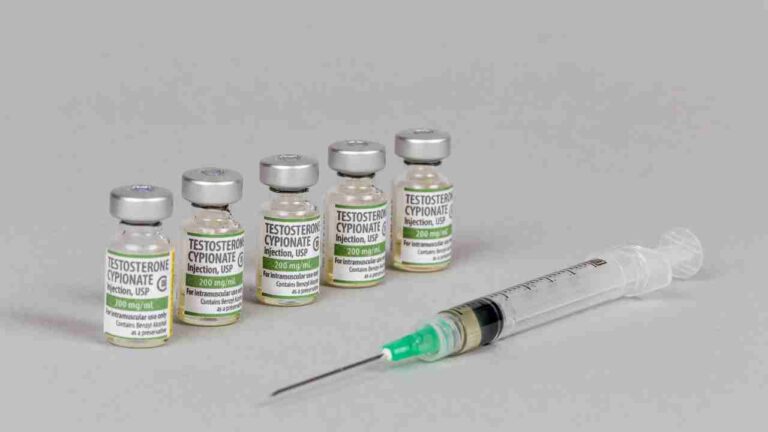Mental health treatments have been advancing and expanding in recent years, with some treatment options focusing on using more natural remedies. One example is ketamine therapy – a strategy that unites medical science, psychological methods, and the pharmacological effects of ketamine to foster improved mental well-being. While ketamine may bring the possibility of solid results, it also carries potential risks. To ensure the best possible outcome and minimal drawbacks, it is important for individuals to thoroughly consider all aspects of this therapy before deciding whether to pursue it or not. Here, we delve into the basics of ketamine therapy.
What is Ketamine Therapy?
Ketamine Therapy is a widely used form of treatment that leverages the powerful antidepressant effects of the drug ketamine. By blocking specific receptors in the brain responsible for regulating mood and emotion, individuals may experience positive outcomes regarding their mental health. Besides providing relief from depression, anxiety, and chronic pain, this therapy can also reduce inflammation and increase blood flow to the brain, thereby improving physical functioning; moreover, it has been found to aid in opioid dependency for those with chronic pain issues. All in all, ketamine therapy has become an effective and reliable option for managing various conditions.
Types of solutions available for ketamine therapy
Ketamine therapy uses the anesthetic drug ketamine to alleviate symptoms of mental health disorders such as depression, anxiety, and post-traumatic stress disorder (PTSD). There are several types of ketamine therapy solutionswhich include:
- Intravenous (IV) Infusions
IV Infusions are widely employed to inject ketamine into the body for therapeutic sessions. This method involves a healthcare professional inserting a needle into a vein in the patient’s arm and steadily pumping the medication directly into the bloodstream. The infusion takes anywhere between forty minutes and an hour, during which time an experienced specialist closely monitors the patient. In attempts to provide further comfort, many clinics offer accompanying support such as calming music, mindful meditation, or breathing routines while the infusion is delivered. Depending on the required amount of relief, the healthcare provider can repeat this action up to three times at intervals to observe any side effects or alterations that may arise.
- Intramuscular (IM) Injections
IM injections are a valuable option for administering ketamine when IV infusion is impossible, given its convenience and portability. Unlike IV infusions, an IM injection produces effects that can last several hours, allowing it to remain active for longer. However, one of the drawbacks of this method is that it can be more painful, as the medication is injected directly into muscle tissue, typically on the buttocks or thigh.
- Nasal spray:
The nasal spray delivery system for ketamine is rapidly gaining popularity, favored by many for its low-invasive nature and convenience. Research has shown that it can be just as effective in treating depression, anxiety, and chronic pain as the standard intravenous (IV) method. While providing quick onset of the medication, its effects may wear off faster than IV infusions. As a result, frequent treatments may be necessary if opting for this route of administration.
Benefits of ketamine infusions for mental health.
Here are some of the benefits of ketamine infusions for mental health:
- Rapid relief
Ketamine infusions have rapidly risen in popularity as a treatment option for those suffering from mental health conditions ranging from depression to PTSD. This is compared to traditional antidepressant medications, which can take weeks or months to show any effect. What makes ketamine unique is that it can provide almost immediate relief, sometimes within hours of the first infusion. Although the exact mechanism behind its efficacy remains unknown, researchers believe its interaction with neurotransmitters like glutamate and GABA plays an important role. This has also been found to raise levels of BDNF, a protein responsible for regulating neuron growth, making it beneficial for both short and long-term use due to its possible ability to encourage neuron regeneration and repair within brain areas linked to various mental illnesses.
- Non-addictive
Ketamine, traditionally a medicine used to alleviate pain and anesthetize patients for surgery, has recently been found to offer unique and promising therapeutic solutions for depression and anxiety. Unlike other psychotropic medications with the potential for addiction and long-term side effects, ketamine holds no such risks when taken at the prescribed dosage. This makes it an attractive alternative for those struggling with mental health issues that do not respond positively to more commonly prescribed treatments like antidepressants.
Ketamine-assisted therapy offers a revolutionary way to treat mental health conditions. Through intravenous infusions, this promising intervention has been shown to drastically decrease symptoms in a relatively short period, with lasting effects. While further studies are essential to cement its efficacy, it holds immense potential to revolutionize the treatment of mental illness and give relief to those searching for support. Efforts must be made to ensure access to this innovative approach, so people can make informed decisions, receive the help they need, and gain a more significant opportunity to recover.







